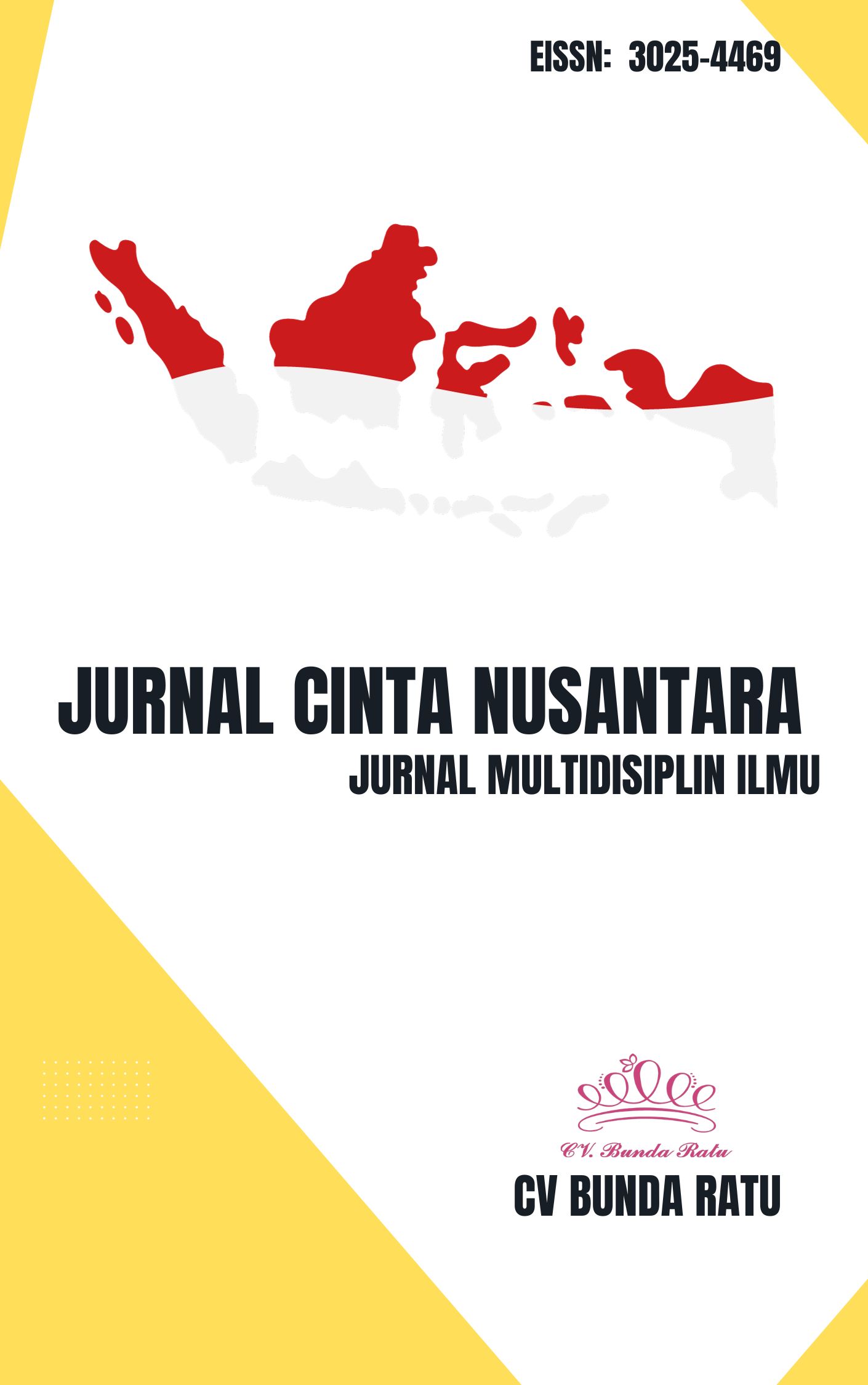Hospital Incident Reporting Behaviour in Indonesia
DOI:
https://doi.org/10.63754/jcn.v1i2.16Abstract
Patient safety is of the main concern in global healthcare. To promote better patient safety, incident reporting is encourage for future betterment. As the largest constituent in numbers of hospital healthcare professionals, nurses have major contribution in implementing patient safety. Nursing career ladder is implemented as an effort to advance nurses’ professionalism in providing safer, more effective and efficient care, also to ensure work satisfaction, career and professional advancement in Indonesia. This research aims to analyze the effect of nurse career ladder and implementation of patient safety goals on incident reporting behavior at inpatient nurses of Hospital X. Survey was conducted by distributing questionnaires to 82 nurses. The results show that career ladder level with patient safety goals implementation have a significant positive effect on incident reporting behavior. Career ladder has a positive effect on patient safety goals implementation. Patient safety goals implementation has a positive effect on incident reporting behavior. Career ladder level has no significant effect on incident reporting behavior. The managerial implications, hospital are encouraged to ensure that assessments of nurse career ladder level advancement are followed by not only increasing level of competency, but also increasing consistency to implement patient safety goals and incident reporting behavior.
References
Ajri-Khameslou, M., Aliyari, S., Hosein Pishgooie, A., Jafari-Golestan, N., & Farokhnezhad Afshar, P. (2018). Factors Affecting Reporting of Nursing Errors: A Qualitative Content Analysis Study. Ann Med Health Sci Res, 8, 215–219.
Benn, J., Koutantji, M., Wallace, L., Spurgeon, P., Rejman, M., Healey, A., & Vincent, C. (2009). Feedback from incident reporting: Information and action to improve patient safety. Quality and Safety in Health Care, 18(1), 11–21. https://doi.org/10.1136/qshc.2007.024166
Benner, P. (1984). From Novice to Expert: Excellence and power in clinical nursing practice. Menlo Park: Addison-Wesley.
Depkes RI. (2017). Peraturan Menteri Kesehatan Republik Indonesia Nomor 40 Tahun 2017 tentang Pengembangan Jenjang Karir Profesional Perawat Klinis.
Engeda, E. H. (2016). Incident Reporting Behaviours and Associated Factors among Nurses Working in Gondar University Comprehensive Specialized Hospital, Northwest Ethiopia. Scientifica, 2016. https://doi.org/10.1155/2016/6748301
Evans, S. M., Berry, J. G., Smith, B. J., Esterman, A., Selim, P., O’Shaughnessy, J., & DeWit, M. (2006). Attitudes and barriers to incident reporting: A collaborative hospital study. Quality and Safety in Health Care, 15(1), 39–43. https://doi.org/10.1136/qshc.2004.012559
Feronica, W. (2013). Hubungan Pengetahuan Dan Sikap Perawat Dengan Pelaksanaaan Keselamatan Pasien (Patient Safety) Di Ruang Rawat Inap Rsud Liun Kendage Tahuna. Jurnal Keperawatan, 1(1).
Flanagan, J. (1954). Psychological bulletin. The critical incident technique. Psychological Bulletin, 59(4), 257–272. Retrieved from http://www.ncbi.nlm.nih.gov/pubmed/19586159
Fukada, M. (2018). Nursing competency: Definition, structure and development. Yonago Acta Medica, 61(1), 1–7. https://doi.org/10.33160/yam.2018.03.001
Gruendemann, B. J. (2006). Buku Ajar Keperawatan Perioperatif ( vol. 2) (2nd ed.). Retrieved from http://kin.perpusnas.go.id/DisplayData.aspx?pId=447&pRegionCode=JIPKMAL&pClientId=111
Gultom, J. A. (2019). Pengaruh Pelatihan , Pengembangan Karir dan Kompensasi Terhadap Produktivitas Kerja Perawat Rumah Sakit Royal Prima. Repository Institusi Universitas Sumatera Utara.
Hynes, J. E. (2009). Don’t be intimidated by incident reports. Licensed Practical Nurse Journals, 5(2), 4–5.
Jahromi, Z. B., Parandavar, N., & Rahmanian, S. (2014). Investigating Factors Associated With not Reporting Medical Errors From the Medical Team ’ S Point of View in Jahrom , Iran. 6(6), 96–104. https://doi.org/10.5539/gjhs.v6n6p96
Jenita, A., Arief, Y. S., & Has, E. M. M. (2019). Analisis Faktor yang Berhubungan dengan Pelaporan Insiden Keselamatan Pasien pada Perawat ( Factor Analysis retaled to the Incident Reporting of Patient Safety Incident ). Fundamental And Management, 2(1), 7–15.
Keykha, R., Mazlum, S., Varasteh, S., Arbabisarjou, A., Nursing, C., & Health, P. (2016). Clinical Competency and Its Related Factors in Nurses. 8(3), 18368–18377.
Kohn, L. T., Corrigan, J. M., & Molla, S. (2000). To Err Is Human. Washington, D.C.: National Academies Press.
Komite Keselamatan Pasien Rumah Sakit. (2015). Pedoman Pelaporan Insiden Keselamatan Pasien (IKP).
Lang, Y. C. (2010). A clinical ladder for occupational health nurses. AAOHN Journal : Official Journal of the American Association of Occupational Health Nurses,58(6),239–244. https://doi.org/10.3928/08910162-20100526-01
Mahajan, R. P. (2010). Critical incident reporting and learning. British Journal of Anaesthesia, 105(1), 69–75. https://doi.org/10.1093/bja/aeq133
Mulyana, D. S. (2013). Analisis Penyebab Insiden Keselamatan Pasien oleh Perawat Di Unit Rawat Inap RS X Jakarta. Kesehatan Masyarakat, 1(April), 13–68.
Nakamura, N., Yamashita, Y., Tanihara, S., & Maeda, C. (2014). Effectiveness and sustainability of education about incident reporting at a university hospital in Japan. Healthcare Informatics Research, 20(3), 209–215. https://doi.org/10.4258/hir.2014.20.3.209
Pakpahan, D. (2015). Analisa Faktor-Faktor yang Berhubungan dengan Kesadaran Pencatatan dan Pelaporan Insiden Keselamatan Pasien di RS Omni Alam Sutera Tahun 2015. Universitas Indonesia.
Pamela H. Mitchell. (2008). Section I: Patient Safety and Quality. Patient Safety and Quality: An Evidence-Based Handbook for Nurses, 1–8.
Pertiwi, B., & Hariyati, R. T. S. (2019). The impacts of career ladder system for nurses in hospital. Enfermeria Clinica, 29 Suppl 2,106–110. https://doi.org/10.1016/j.enfcli.2019.04.016
Slawomirski, L., Auraaen, A., & Klazinga, N. (2017). The Economics of Patient Safety. Bonn: OECD.
Sukesi, I., Soeharto, S., & Ahsan. (2015). Analisi Faktor Yang Berhubungan Dengan Kinerja Perawat Melaksanakan Keselamatan Pasien. Http://Ejournal.Umm.Ac.Id/Index.Php/Keperawatan/Issue/View, 6, 34–42.
Syahrul, S., Majid, A., & Harsul, W. (2018). Penerapan Budaya Pelaporan Insiden Keselamatan Pasien Di Rumah Sakit Umum Daerah Tipe B Provinsi Sulawesi Selatan. Jurnal Pengabdian Kepada Masyarakat, 2(2), 119–126.
WHO. (2019). Patient Safety Fact File. Patient Safety and Risk Management Service Delivery and Safety.
Additional Files
Published
How to Cite
Issue
Section
License
Copyright (c) 2023 Agung, Luxandre, Kemala.R.W, dan Hasyim

This work is licensed under a Creative Commons Attribution 4.0 International License.






